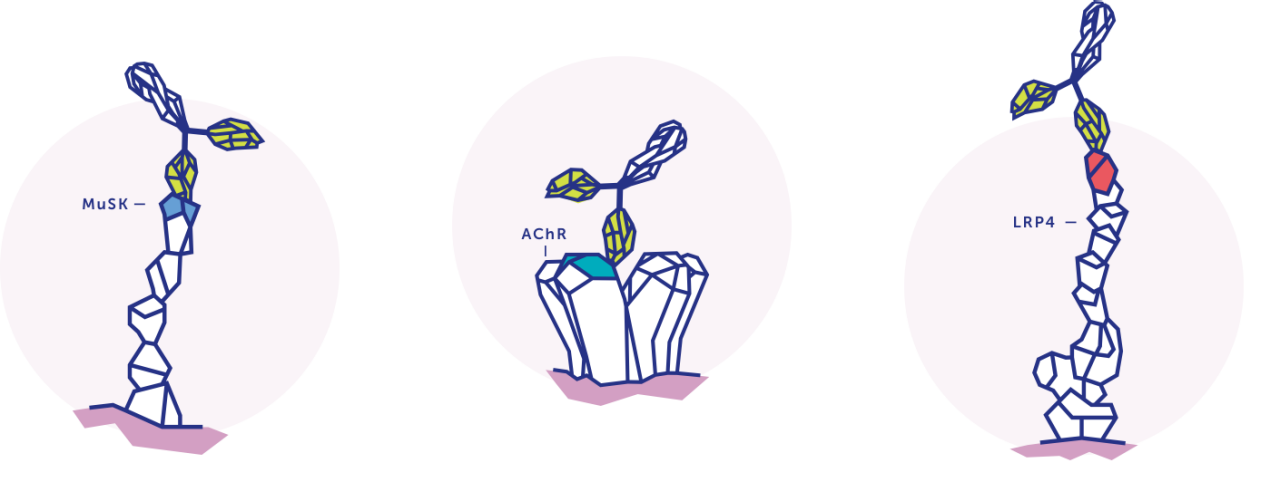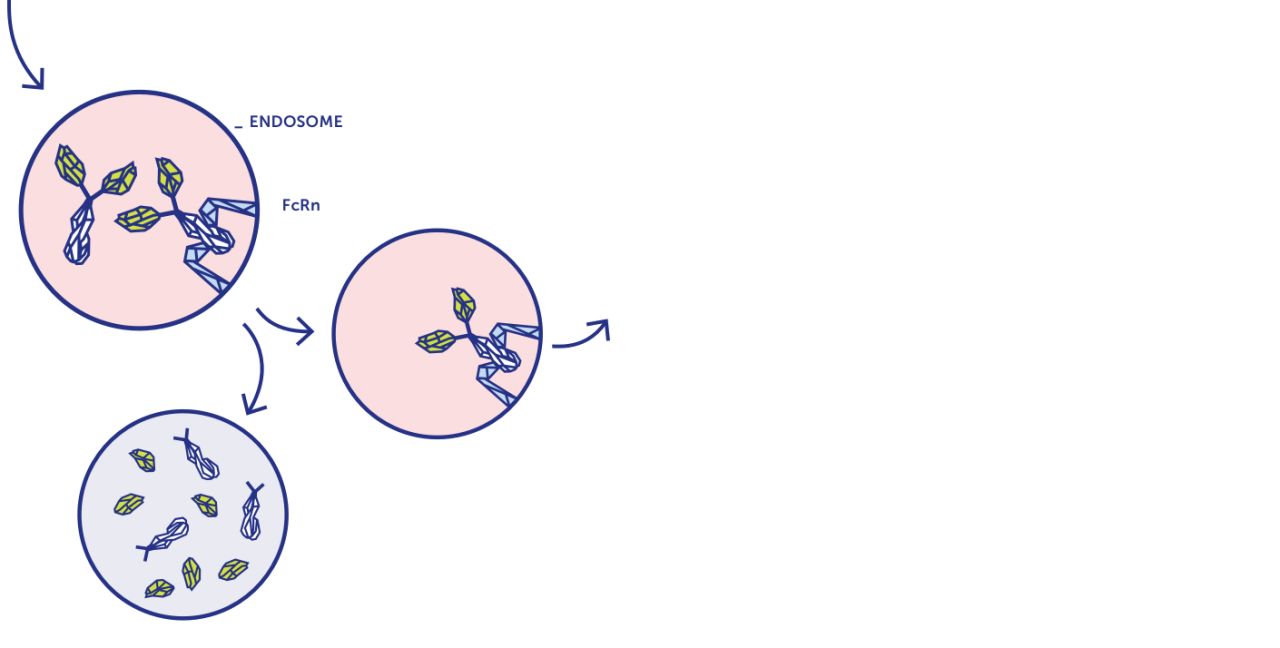08/05/2021
The neonatal Fc Receptor (FcRn) in generalized myasthenia gravis (gMG)

Figure 1: Pathogenic IgG autoantibodies attack AChR, MuSK, and LRP4 at the NMJ.
Generalized myasthenia gravis (gMG) is a chronic, incapacitating, immunoglobulin G (IgG)-mediated autoimmune disease that causes intense muscle weakness and extreme fatigue.1-4 It is driven by pathogenic IgG autoantibodies against key components of the neuromuscular junction (NMJ), including acetylcholine receptors (AChR), muscle-specific tyrosine kinase (MuSK), and low-density lipoprotein receptor-related protein 4 (LRP4) (Fig. 1). When directed against AChR, IgG autoantibodies can often lead to the failure of neuromuscular transmission and skeletal muscle weakness through 3 distinct pathogenic actions: functional blockade of AChR, internalization and degradation of AChR, and activation of the complement system.3-5

Figure 2: IgG binds to FcRn, avoiding lysosomal degradation and returning to circulation.
The pathogenic activity of IgG autoantibodies is perpetuated by neonatal Fc receptor (FcRn)-mediated recycling. Present in several cell types, including vascular endothelial cells, FcRn specifically binds to all IgG antibodies and rescues them from lysosomal degradation (Fig. 2). This extends their half-life to approximately 4 times that of other antibodies not recycled by FcRn, such as IgA and IgM. In prolonging their half-life, FcRn has been shown to help maintain the high concentrations of IgG antibodies, including pathogenic antibodies observed in gMG.6-8
FcRn-mediated IgG recycling is being explored in gMG.9,10
Watch the video to learn more about FcRn-mediated IgG recycling in gMG.
References: 1. Gilhus NE. N Engl J Med. 2016;375(26):2570-2581. doi:10.1056/NEJMra1602678 2. Gotterer L, Li Y. J Neurol Sci. 2016;369:294-302. doi:10.1016/j.jns.2016.08.057 3. Huijbers MG et al. J Intern Med. 2014;275(1):12-26. doi:10.1111/joim.12163 4. Mantegazza R et al. Neuropsychiatr Dis Treat. 2011;7:151-160. doi:10.2147/NDT.S8915 5. Gilhus NE et al. Nat Rev Neurol. 2016;12(5):259-268. doi:10.1038/nrneurol.2016.44 6. Roopenian DC, Akilesh S. Nat Rev Immunol. 2007;7(9):715-725. doi:10.1038/nri2155 7. Pyzik M et al. Front Immunol. 2019;10:1540. doi:10.3389/fimmu.2019.01540 8. Gable KL, Guptill JT. Front Immunol. 2020;10:3052. doi:10.3389/fimmu.2019.03052 9. Habib AA et al. Muscle Nerve. 2020;62(5):579-592. doi:10.1002/mus.26919 10. Dalakas MC. Curr Opin Neurol. 2020;33(5):545-552. doi:10.1097/WCO.0000000000000858